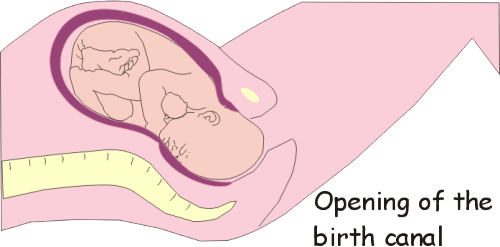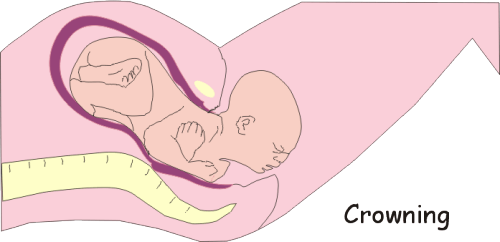Birth
After around 38 weeks after fertilisation the baby is ready to be born. The baby is in the birth position with its hed towards the cervix. The hormone oxytocin is released from the pituitary gland. This causes the muscular uterus wall to begin contractions.
In order for the baby to leave the uterus the cervix needs to stretch and dilate wide enough for the baby to get through. The initial contractions push the baby's head against the cervix to cause it to dilate. During this phase the amnion breaks releasing fluid. This is known as the breaking of the waters. This phase of birth is the longest and can last for between 4 and 12 hours. The phase is complete when the cervix has dilated enough to allow the baby's head through.

Further contractions of the uterus begin to push the baby out. Crowning is when the head is first visible at the entrance to the vagina. The head is the largest part of the body and once this is out the rest of the body is usually easier to deliver.

When the baby first appears the skin is often bluish. This rapidly changes to pink when the baby starts breathing and the blood becomes oxygenated. The umbilical cord is clamped and cut separating the child for its mother.

Further contractions of the uterus push out the placenta (afterbirth). When this is done birth is complete.
